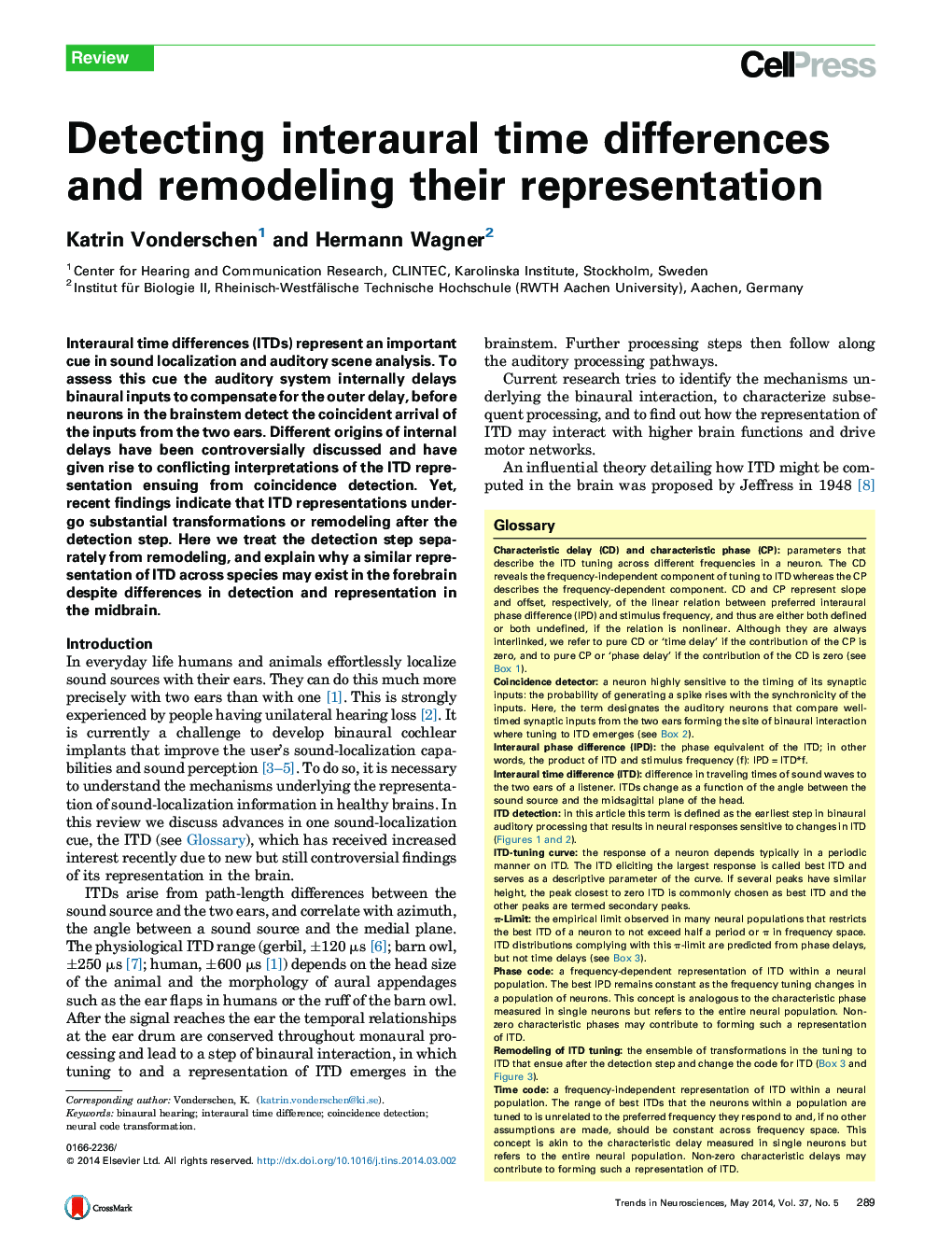| Article ID | Journal | Published Year | Pages | File Type |
|---|---|---|---|---|
| 4354285 | Trends in Neurosciences | 2014 | 12 Pages |
•Across species, interaural time differences are detected by different mechanisms.•The detection stage serves as a database for higher auditory areas.•ITD representation is remodeled along the ascending auditory pathway.•Across species, ITD is represented in few broadly tuned channels in the forebrain.•Forebrain ITD representations likely subserve spatial unmasking.
Interaural time differences (ITDs) represent an important cue in sound localization and auditory scene analysis. To assess this cue the auditory system internally delays binaural inputs to compensate for the outer delay, before neurons in the brainstem detect the coincident arrival of the inputs from the two ears. Different origins of internal delays have been controversially discussed and have given rise to conflicting interpretations of the ITD representation ensuing from coincidence detection. Yet, recent findings indicate that ITD representations undergo substantial transformations or remodeling after the detection step. Here we treat the detection step separately from remodeling, and explain why a similar representation of ITD across species may exist in the forebrain despite differences in detection and representation in the midbrain.
